
Ignaz Philipp Semmelweis was a Hungarian physician and scientist of German descent, who was an early pioneer of antiseptic procedures, and was described as the "saviour of mothers". Postpartum infection, also known as puerperal fever or childbed fever, consists of any bacterial infection of the reproductive tract following birth, and in the 19th century was common and often fatal. Semmelweis discovered that the incidence of infection could be drastically reduced by requiring healthcare workers in obstetrical clinics to disinfect their hands. In 1847, he proposed hand washing with chlorinated lime solutions at Vienna General Hospital's First Obstetrical Clinic, where doctors' wards had three times the mortality of midwives' wards. The maternal mortality rate dropped from 18% to less than 2%, and he published a book of his findings, Etiology, Concept and Prophylaxis of Childbed Fever, in 1861.

Hunyad was an administrative county (comitatus) of the Kingdom of Hungary, of the Eastern Hungarian Kingdom and of the Principality of Transylvania. Its territory is now in Romania in Transylvania. The capital of the county was Déva.

Semmelweis University is a research-led medical school in Budapest, Hungary, founded in 1769. With six faculties and a doctoral school it covers all aspects of medical and health sciences.

The University of Pécs is one of the largest higher education institutions in Hungary. The history of the university began in the Middle Ages, when in 1367, at the request of King Louis I the Great, Pope Urban V granted permission to found the institution. This made it the first university in Hungary and the fourth in Central Europe. The official successor of the university is the Elisabeth University of Pozsony (Bratislava), founded in 1912. In 1921, after Bratislava became part of Czechoslovakia, the university was moved to Pécs in 1951, the Faculty of Medicine separated and existed as an independent institution, until it merged with the Janus Pannonius University in 2000, which united the other faculties in Pécs. This is how the current University of Pécs was created.

Hajdúdorog is a town in Hajdú-Bihar county, in the Northern Great Plain region of eastern Hungary. Hajdúdorog had a population of 8,797 in 2014, with a population density of 8,997 people per km2. The city is 130 m above sea level and the district area is 100.65 km2.
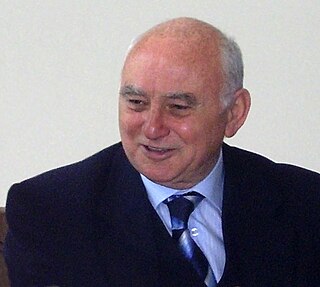
Ferenc Glatz is a Hungarian historian and academician. He has served three terms as the president of the Hungarian Academy of Sciences.
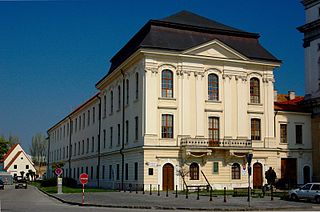
The University of Trnava (in Trnava) (Slovak: Trnavská univerzita v Trnave) is based in Trnava, in the west of Slovakia. The university's presence in the town has historical antecedents as the University of Nagyszombat was operating there throughout the 17th and 18th century (present day Eötvös Loránd University in Budapest).

Hungarian art stems from the period of the conquest of the Carpathian basin by the people of Árpád in the 9th century. Prince Árpád also organized earlier people settled in the area.
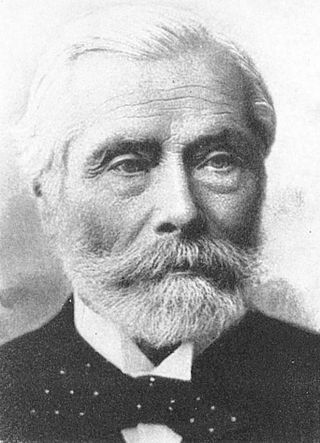
Lajos Markusovszky (1815–1893) surgeon, from 1857 founder and publisher of Orvosi Hetilap, later editor of the journal, after 1867 Advisor to the Ministry for Religion and Education regarding University affairs.
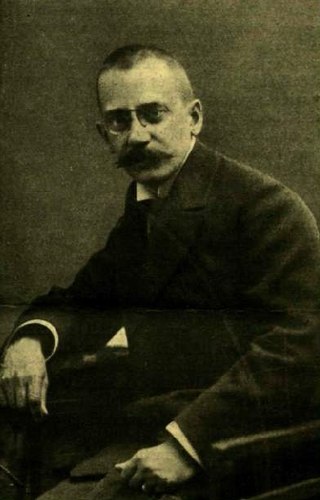
Gusztáv Gratz was a Hungarian politician, who served as Minister of Foreign Affairs in 1921. He was a correspondent member of the Hungarian Academy of Sciences. Gratz published in the Huszadik Század and the Társadalomtudományi Társaság newspapers. He was a representative in the National Assembly from 1906. He also served as managing director of the National Association of Manufacturers (GYOSZ). In 1917 he was appointed Minister of Finance in Móric Esterházy's cabinet. He took part in the peace negotiations' economical parts during the Treaty of Brest-Litovsk and Treaty of Bucharest.
Gábor Vékony was a Hungarian historian, archaeologist and linguist, associate professor at Faculty of Humanities of the Eötvös Loránd University, Candidate of Sciences in History. He was an expert of the rovás scripts and a researcher of Hungarian prehistory.

István Stumpf is a Hungarian lawyer, political scientist, sociologist, university professor, political science PhD, former constitutional justice at the Constitutional Court of Hungary. From 1991 to 1994 he was the youth policy adviser to the president of Hungary, Árpád Göncz. He also served as minister of the Prime Minister's Office from 1998 - 2002 in the first cabinet of Viktor Orbán. In the beginning of 2021 February he was appointed for a term of 2 years as government commissioner responsible for model change of universities.
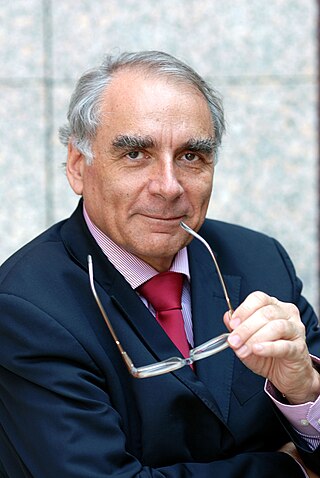
Tibor Frank was a Hungarian historian who was professor of history at the School of English and American Studies of the Faculty of Humanities of the Eötvös Loránd University (ELTE). He was director of its School of English and American Studies. From 2013 he was corresponding member of the Hungarian Academy of Sciences (MTA), as of 2019 he was a full member.

Miklós Kásler is a Hungarian oncologist, professor, director of the National Institute of Oncology, and Minister of Human Resources from 2018 to 2022.

Emőke Bagdy is a Hungarian clinical psychologist, psychotherapist, clinical supervisor, professor emerita at the Károli Gáspár University of the Reformed Church in Hungary (KRE), and former director of the National Institute of Psychiatry and Neurology. Her research, books, papers and talks focus on psychotherapy, health psychology and foundational problems of clinical psychology and clinical supervision.

Iván Vitányi was a Hungarian sociologist, essayist, dance historian, philosopher of art and politician. He was a member of the National Assembly of Hungary from 1990 to 2014.
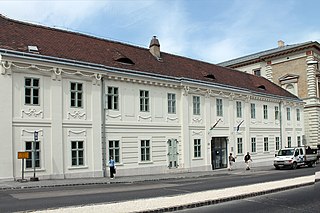
The Semmelweis Museum, Library and Archive of the History of Medicine is a museum, library and archive in Budapest, Hungary. It was founded in 1965, and became a department of the Hungarian National Museum in 2017. The museum is located in the 18th-century house where Ignaz Semmelweis was born in 1818. The exhibition covers the development of healthcare in Hungary and the main stages in the history of medicine in Europe.
Zoltán Tefner is a Hungarian historian and Germanist, a university lecturer and an associate professor at Corvinus University of Budapest. He is also a member of the European Academy of Sciences and Arts.
György László Bagdy is a Hungarian pharmacist, research physician, neuropsychopharmacologist and university professor. He is also a Candidate of Medical Sciences (1992) and Doctor of the Hungarian Academy of Sciences (1999).
















